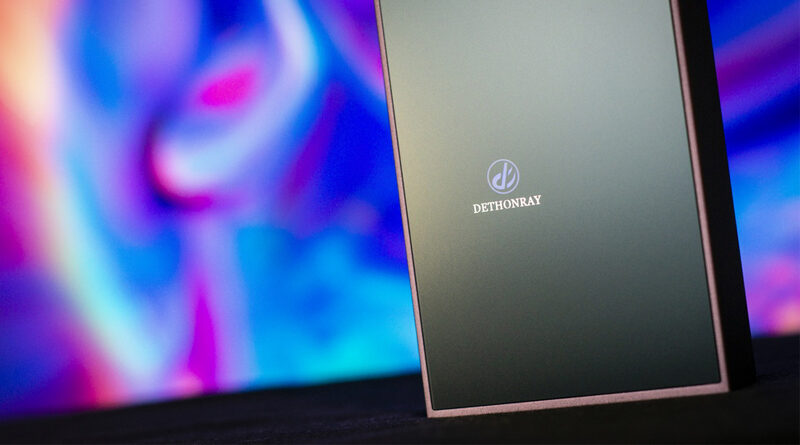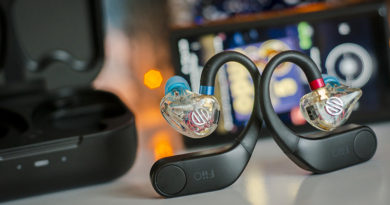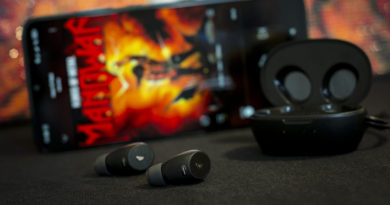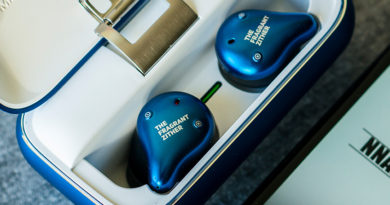Dethonray Pegasus SG1 – Bluetooth high-end DAC
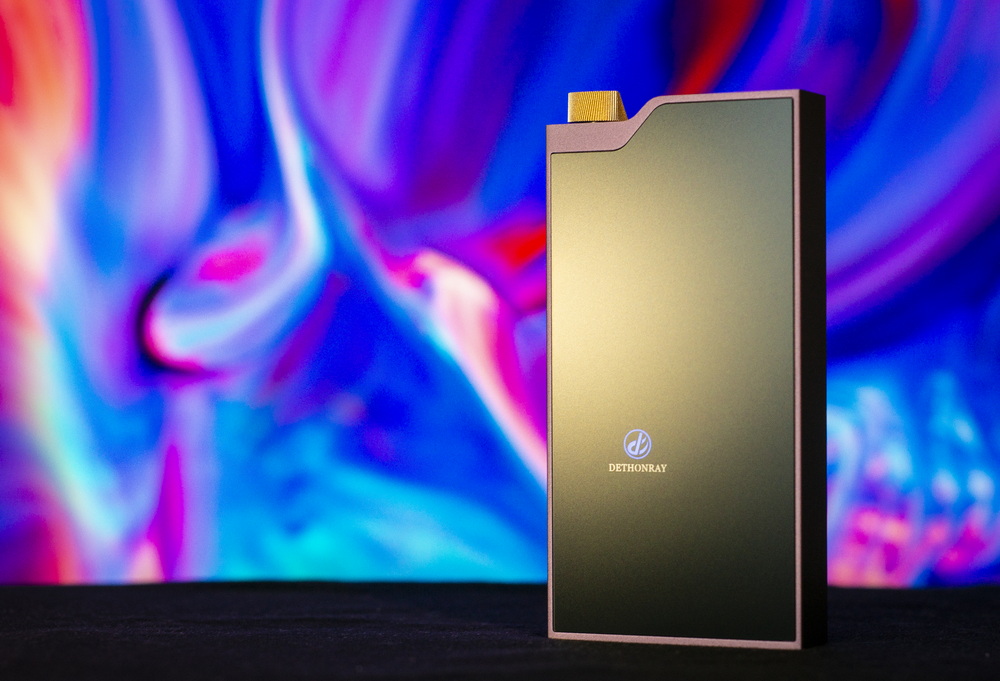
One device for one function – I admire Anson’s unique and stable approach of developing masterpieces in every audio hardware niche… Let’s be honest, even a perfect device with limited functionality is risking to be buried down by millions of all-in-one mere consumer choices just because it is more convenient to use… DSLRs are almost out of the consumer market, as well as voice and video recorders, book readers, DAPs, etc. Most of the users would still agree that prosumer or pro-level stand-alone devices deliver much better quality but who cares if the content is made for and consumed in social networks? Personally, I regret the times when everyone tried to acquire the best shot out of 24-36 frames instead of storing thousands of useless files… That is why all Dethonray products impress me this much – they build a reference to those good old times when everything was designed for “pro”, forcing users think and progress.
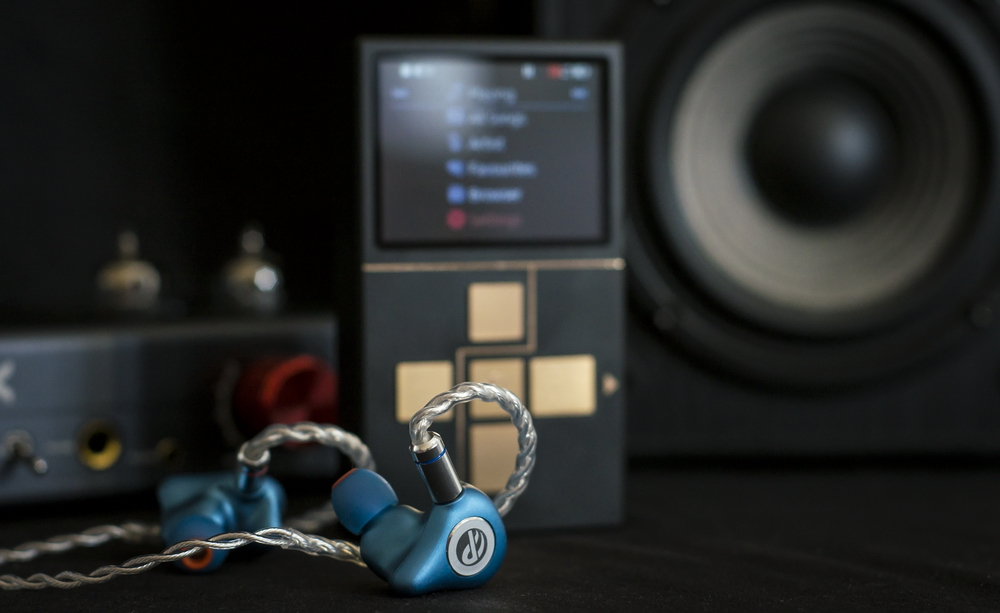
Pegasus SG1 is not an exception. It is a sixth masterpiece developed by Anson and released in June 2022 that fills Bluetooth audio niche in Dethonray lineup. DTR1 DAP was the first, followed by Honey AMP. Later came one of the best bundle in portable HiRes audio world consisting of DTR1+ and Tender 1 planar IEMs and now comes the Pegasus. Here is the corresponding retrospective picture from the official Dethonray website:
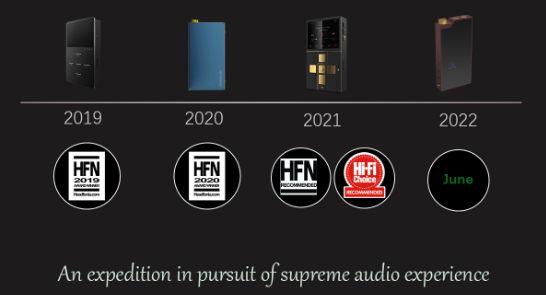
All of those devices are highly rated by the reviewers and respected by both – audio “fans” and “philes”. Personally, I am using DTR1, DTR1+ and Tender 1 for a long time and can state that both DAPs and Tender IEMs still remain the ultimate audio performers with no problems in technical aspects either. Moreover, those devices had already gained some magic aura around and turned to collectibles. I still wouldn’t call Dethonray a “boutique” brand since boutique means something extravagant and limited in amount but not necessarily having high quality of the production. Opposingly, Dethonray is managing to deliver high quality of functioning along with similarly high quality of the production even despite smaller volumes compared to market mastodons. Therefore, I would rather name Dethonray as high-end brand working in the respective niche.
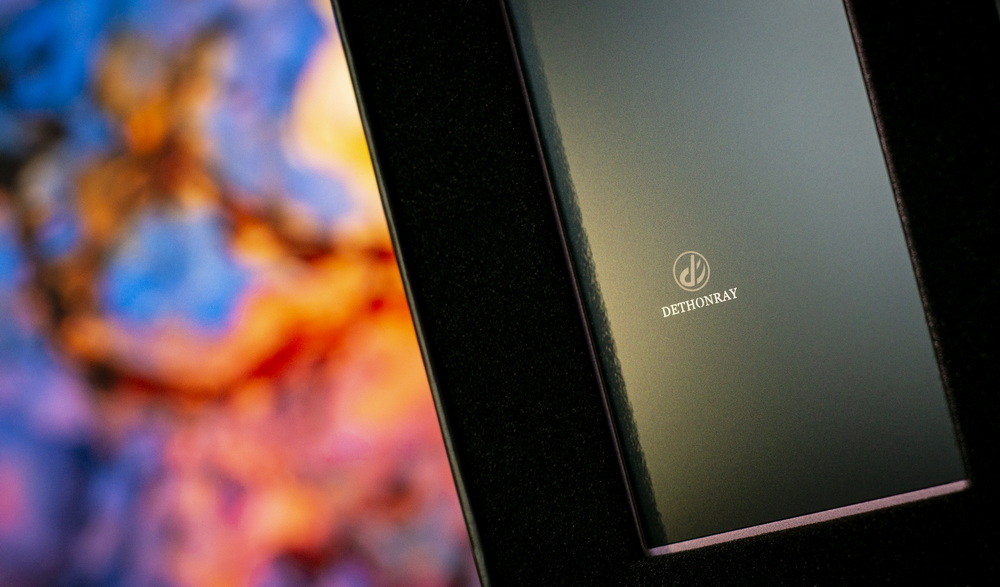
So, the Pegasus SG1 – what is it designed for? Here are the specs first:
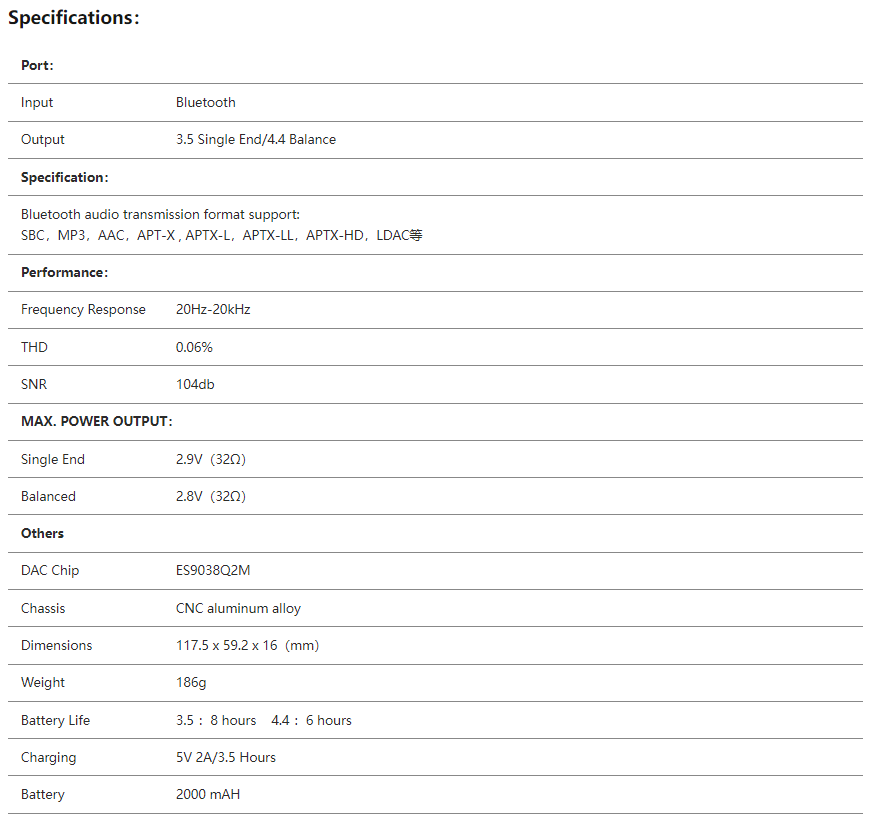
As can be seen from the specs – Pegasus main and the only purpose is acting as Bluetooth receiver -> processing the incoming stream -> converting to audio signal. It incorporates various popular audio codecs, including the HiRes LDAC (24bit/96kHz). Outputs presented by both – 3.5mm SE and 4.4mm BL ports. The main feature shared across all Dethonray devices is also present in Pegasus technical design – DPPU (Desktop Plus Power Unit):
DPPU adapts dual high-density battery customized power system, designed for High-Fidelity while ensuring separation of digital and analog power to eliminate digital circuit noise from the source, alike an enhanced DAP + Amplifier system but with a minimal path and hard soldered joints with no compromises.
There is one additional feature that is very important but rarely stated about Pegasus: the ability to change sound signature by different FW versions. It comes with “Rhapsody” FW by default and can be changed to “Serenade” FW on behalf of a user. I’ve seen such implementation once before in Tempotec / Hidizs USB DACs that really did a job of changing the sound to user preference. This is much more convenient than replacing Op-Amps or any part of the hardware but still requires some understanding and PC skills.
Link to Pegasus SG1 at AliExpress: LINK
Link to Pegasus SG1 at Amazon: LINK
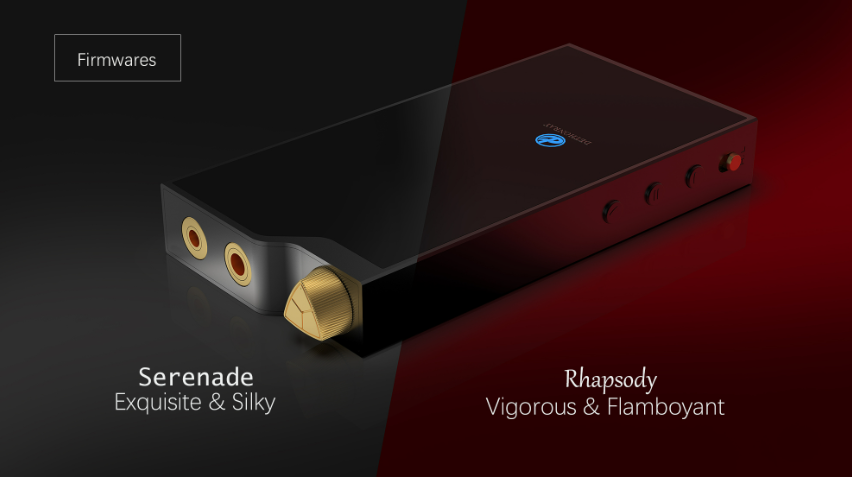
Back to Pegasus SG1 description:
It comes in black box regular for all Dethonray devices. Box is stiff and perfectly does a job of securing its components. Single layer inside consisting of foamy insert with the cutout that holds Pegasus at place. Than goes the beauty – Pegasus SG1 resting there with its perfectly polished glass top cover facing outwards and tiny aluminum bezel around.
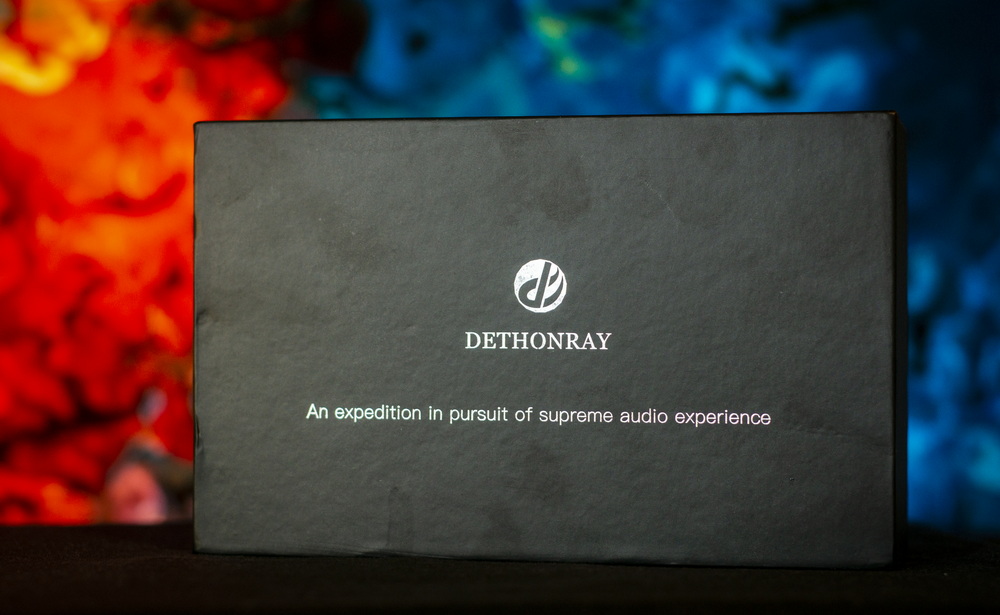
I’ve seen 4 body colors available: purple, red, black and mint and I can say that red and purple look punchy.
Dethonray logo underneath front glass panel has multicolor LED backlight that resembles the device current state.
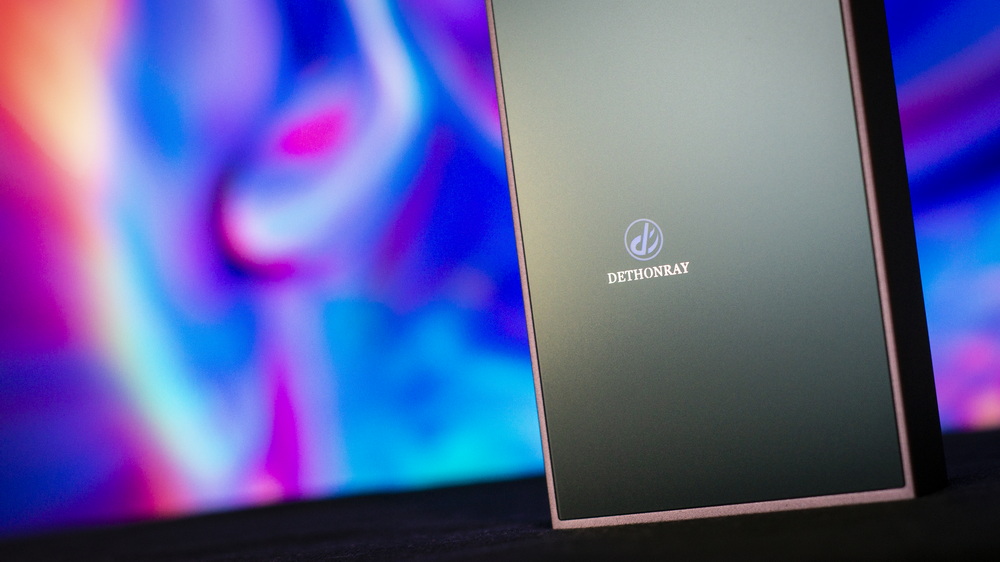
Another beautiful element is the volume knob that combines clever design for comfortable grip with peculiar shape, appropriate color and matt finish.
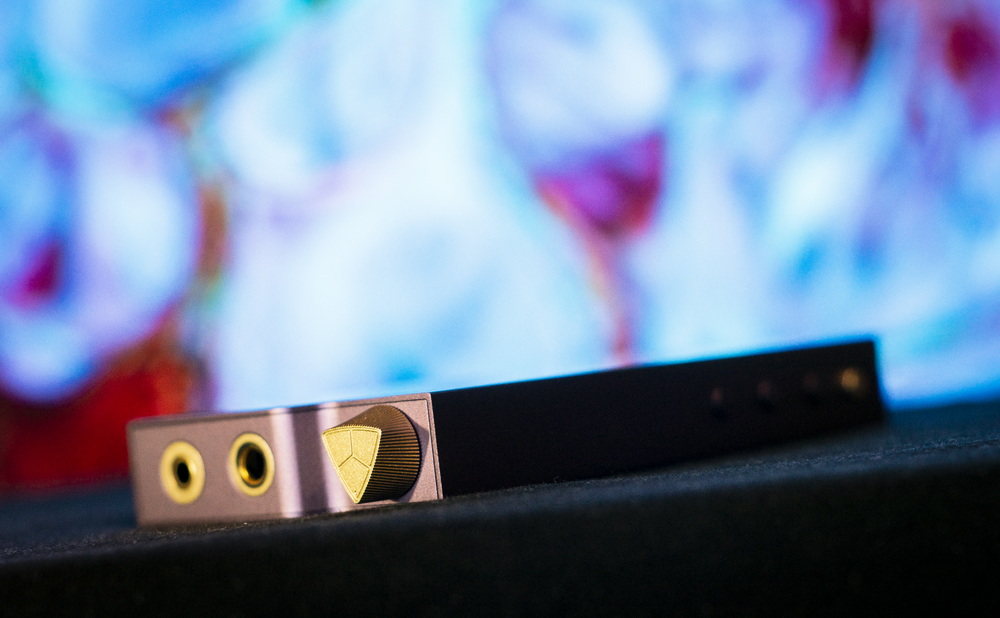
Both output ports are located on the top edge. All control buttons gathered on the left edge.
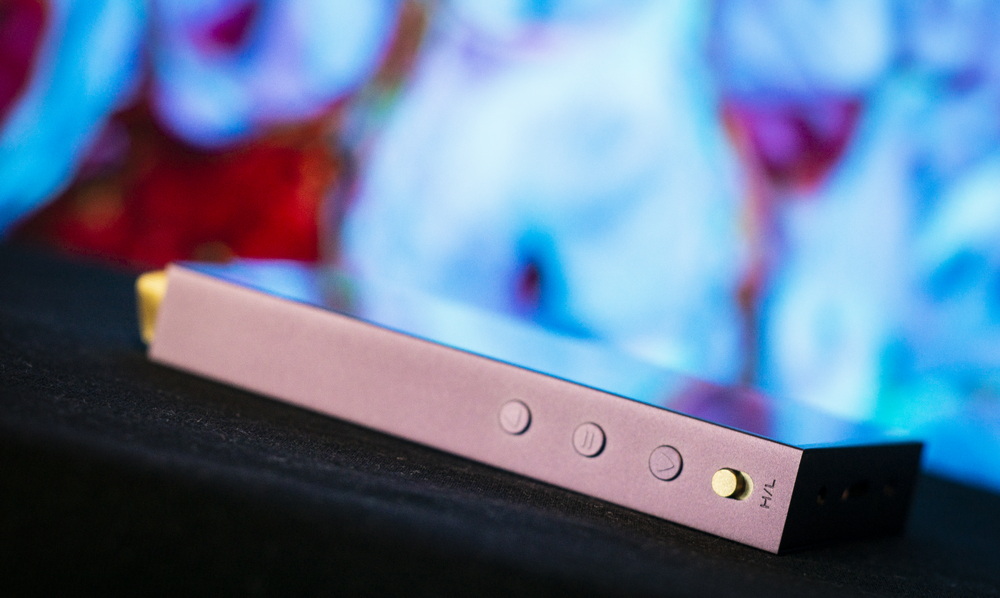
Bottom edge holds type-C charging port and the additional LED indicator that duplicates front facing logo in its behavior.
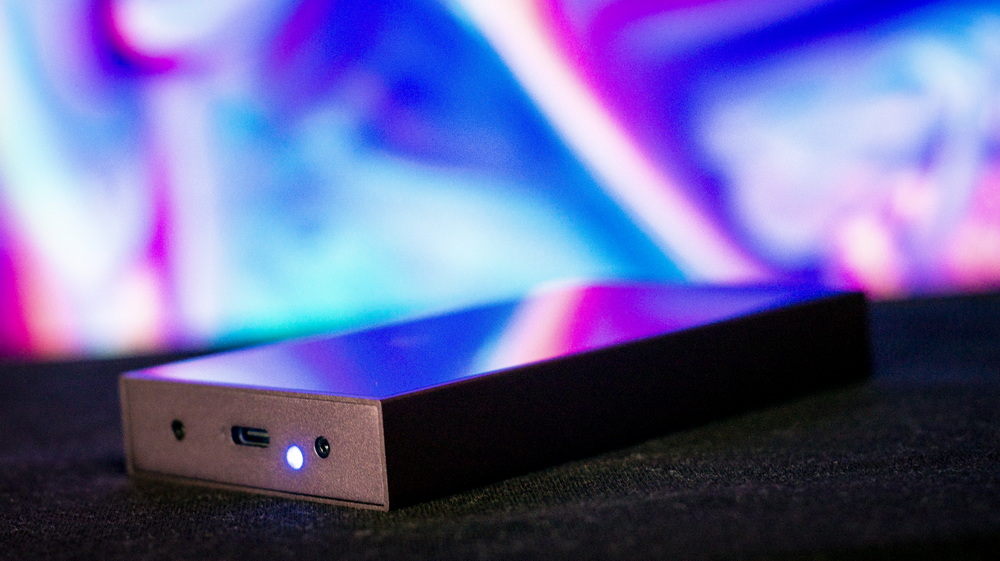
Very neat, strict and beautiful design at the same time. Feels rigid and comfortable in hands. The only drawback is that placing it in a pocket with keys, phones or other stuff might leave the marks on its perfect surfaces. Jello-stickers would definitely help here.
Pegasus SG1 in operation:
Since the Pegasus is a BT receiver, first thing to do after initial charging is to connect it over Bluetooth to any audio source. Of course, the best performance can only be achieved with the sources capable of LDAC or apt-X HD codecs. Most of the recent phones, tablets and DAPs would surely support at least one. Although, Apple users would still be limited to lossy AAC codec instead due to Apple closed politics on that (devices for the professionals, I bet).
There is no multipoint feature in Pegasus, therefore – only 1 device at once. But the previously connected would be stored in BT controller memory for fast reconnection in the future.
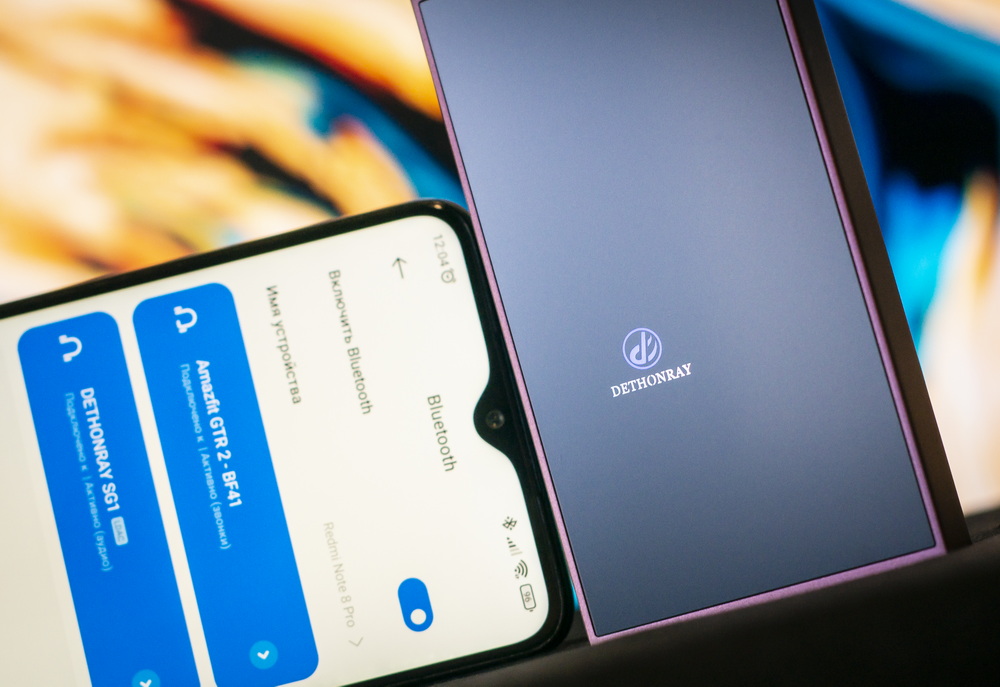
The process of pairing is very fast, LED comes of a help to show whether Pegasus is still pairing (blinks) or has already paired (constantly lit). You would only have to choose PEGASUS SG1 under phone BT available devices and tap on connect. Most of the sources would state codec that is being used for audio transfer between the devices. In my case it is the most capable LDAC (Xiaomi Redmi Note 8Pro). Unfortunately, battery status is not being transferred from Pegasus to phone. Dethonray claims around 8 hours of continuous performance with SE and 6 hours with BL output. Real world tests proved those figures right.
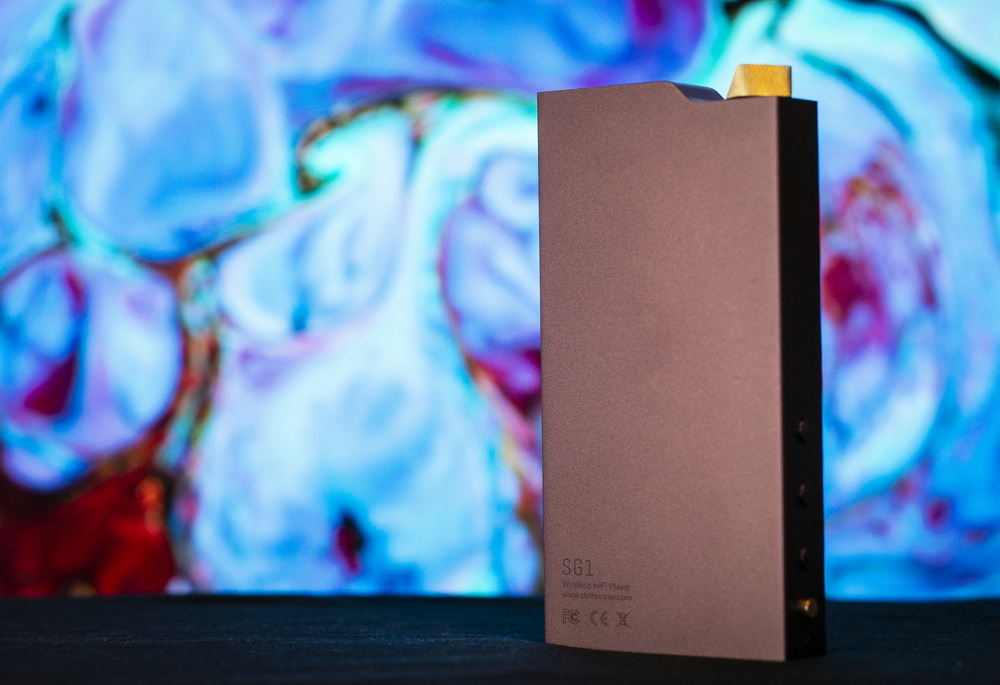
Upon the connection, there are 3 buttons on Pegasus that work as expected: PLAY|PAUSE, NEXT and PREVIOUS. Buttons feel tight, no rattling. The additional two-way switch is designed to change from low to high gain depending of the headphones impedance. It is really better to stay off selecting high gain for IEMs lower than 16Ohms or it might be damaged. Volume knob has pleasing feel of tight travel and comfortable grip. It acts pretty accurately, delivering smooth volume change in both directions. Much more convenient than discrete volume buttons found in phones, USB DACs and in some DAPs that change it quite abruptly. Here you can select any desired levels, starting with the barely heard ones.
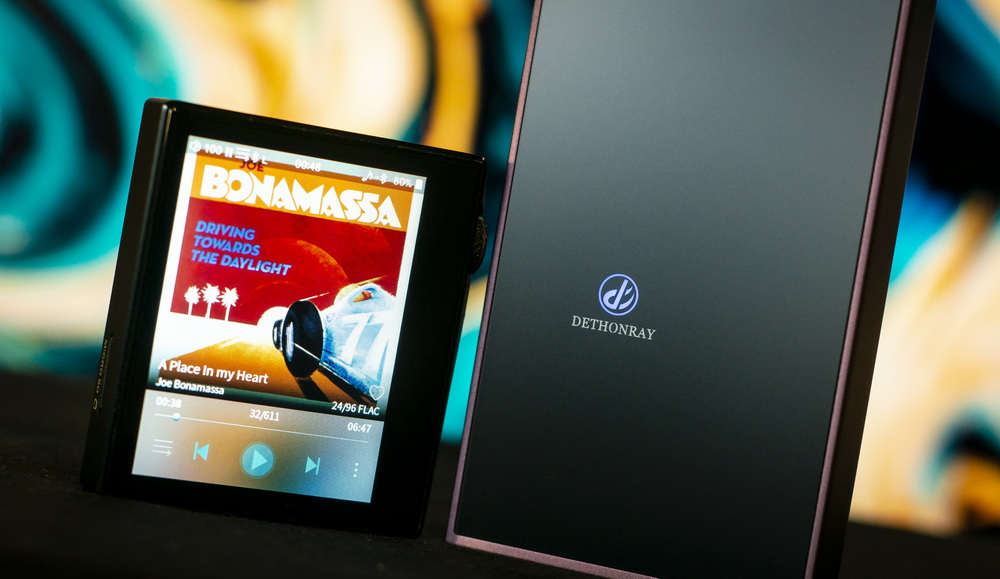
Pegasus stays stays cold during operation with only slight warming up while the battery takes charge. Type-C port is only used for charging | FW upgrades but the function of USB DAC is not available.
FW change:
As said before, this BT DAC has two different firmware versions. Rhapsody (default) is more assertive and Serenade is more calm and melodic in its signature. Changes in sound are audible but not vital. It is more about rounding some edges and slightly changing the entire timbre. Personally, I prefer Serenade version over Rhapsody for its slightly added warmth and smoothness. Phapsody is better for more aggressive and rhythmic genres.
Here is the link to FW download on Dethonray website: LINK
The process of switching to another FW is quite cumbersome but doable. Here are the steps:



The sound:
Pegasus SG1 is impressive. Sounds linear with the emphasis on mids which sound thick and pleasingly warm. Sound perception is natural and balanced. Quite hard to notice any discrepancies that would disclose its wireless connection.
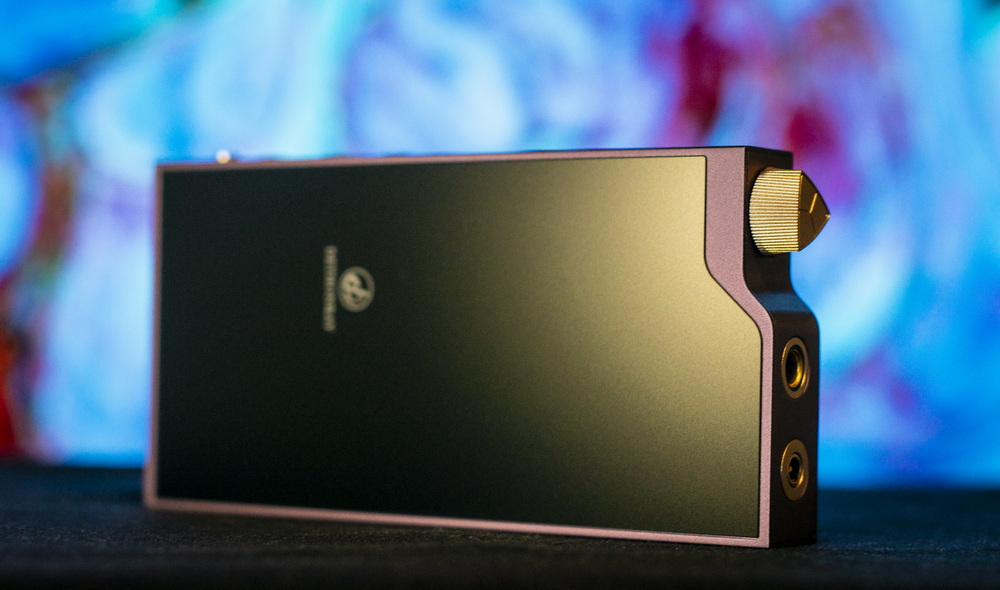
Bass is well-resolved and emphasized. This bleeds into mid bass and affect the entire sound with such pleasing warm and thick strokes. Fortunately, mid bass section is still maintaining great dynamics and tightness to sound juicy. Mids stand out as the central part of the presentation and deliver voices and instruments naturally. No hisses or sibilants even with sensitive IEMs. Lows definitely have more impact on mids than treble. Slight lack of texturing due to BT connection but still feels very musical due to accurate and smooth delivery. Despite wireless connection, treble is well-extended, with no abrupt nuances. Good clarity and correct balance with other ranges without any emphasis makes treble very accurate and appealing, leaving the whole sound closer to the dark side.
Great choice of tuning for such BT DAC. Possibly the best to go away from dry and analytical approach to very musical one that also hides some imperfections.
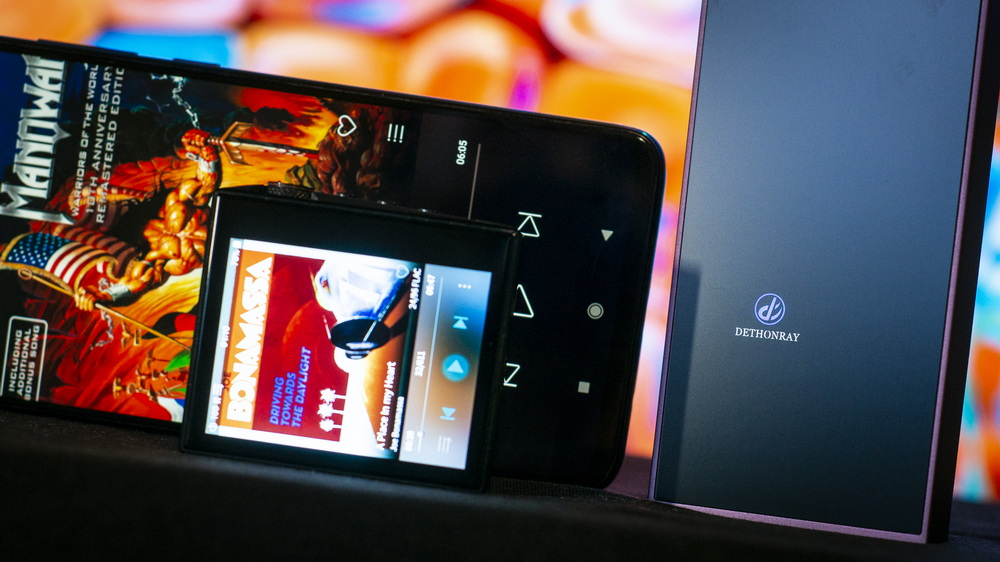
Conclusion:
Pegasus SG1 is the best sounding Bluetooth DAC among all BT audio devices of al types I’ve tried so far. IEMs with BT lace, BT earhooks, TWS, BT ultra-portable DACs – all suffered from apparent wireless connection limitations especially noticeable on abrupt treble and limited extensions. It might be the outcome of device hardware size, design or multifunctional abilities when some are developed appropriately and some are just for show. Pegasus, on its turn, is made for one function and made perfectly: in terms of design, logics and performance. It uses the best BT codecs possible, shows no hiccups in operation and makes the sound truly appealing. Moreover, it sounds almost indistinctive to very good portable wired setup combinations. Feels like with the Pegasus SG1, going wireless is no longer a compromise either with headphones or in desktop use with active speakers or amps.
Link to Pegasus SG1 at AliExpress: LINK
Link to Pegasus SG1 at Amazon: LINK

